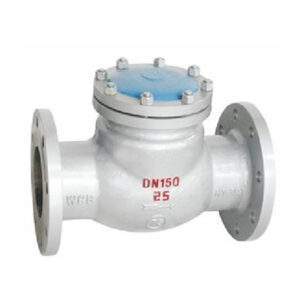Introduction

A backflow check valve is an unsung hero in the realm of plumbing systems, safeguarding against the insidious threat of reverse flow. This indispensable device ensures that fluids, such as water, flow unidirectionally, thereby protecting public health and property. In this comprehensive exploration, we will delve into the intricacies of backflow check valves, unraveling their mechanisms, types, applications, and paramount significance.
Unraveling the Mechanics of Backflow Check Valves
A backflow check valve operates on a relatively simple yet ingenious principle: it permits the unimpeded flow of fluid in one direction while automatically sealing to thwart any reverse flow. The valve typically incorporates a movable element, such as a resilient ball or a flexible flap, which is held open by the forward pressure exerted by the fluid. When the pressure gradient reverses, this movable component is compelled to close, forming a secure seal.
The Diverse World of Backflow Check Valves
A myriad of backflow check valve types exist, each meticulously designed to address specific applications and varying levels of protection. Some of the most prevalent types include:
- Reduced Pressure Zone (RPZ) Backflow Preventer: This highly effective valve is considered the gold standard for backflow prevention. It comprises two check valves and a relief valve, providing multiple layers of protection against potential contamination. This robust design ensures that even in the event of a pressure surge or a sudden drop in pressure, the valve remains steadfast in its protective role.
- Double Check Valve Assembly: This assembly consists of two check valves arranged in series, offering a lower level of protection compared to an RPZ valve. It is often employed in less critical applications where the potential for contamination is lower.
- Pressure Vacuum Breaker (PVB): PVBs are primarily utilized in situations where there is a heightened risk of siphonage, such as garden hoses or irrigation systems. They operate by preventing the formation of a vacuum within the system, thereby inhibiting the backflow of contaminated water into the potable water supply.
- Atmospheric Vacuum Breaker (AVB): AVBs share similarities with PVBs but possess a simpler design and are commonly employed in less critical applications. They function by venting to the atmosphere, thus preventing the creation of a vacuum and the subsequent backflow of water.
The Imperative of Backflow Prevention
Backflow prevention is not merely a precautionary measure but an imperative necessity for several compelling reasons:
- Public Health Safeguard: Backflow has the potential to contaminate potable water supplies with harmful substances, posing significant health risks to the community. These contaminants can range from bacteria and viruses to chemical pollutants, potentially leading to severe illnesses.
- Property Protection: Backflow can cause substantial water damage to buildings and equipment, resulting in costly repairs and operational disruptions. The force of water can erode pipes, damage fixtures, and inundate basements, causing significant property damage.
- Environmental Stewardship: Backflow can introduce pollutants into the environment, harming ecosystems and water bodies. These pollutants can compromise water quality, harm aquatic life, and disrupt delicate ecological balances.
Strategic Deployment of Backflow Check Valves
Backflow check valves are mandated in a wide range of plumbing systems, including:
- Commercial Establishments: To safeguard water quality and prevent contamination in commercial buildings, such as offices, retail stores, and restaurants.
- Industrial Facilities: To protect industrial processes and prevent cross-contamination in manufacturing plants, chemical facilities, and other industrial settings.
- Residential Properties: In certain situations where cross-connection hazards exist, such as properties with irrigation systems, swimming pools, or fire sprinkler systems.
Local building codes and plumbing regulations will outline the specific types of backflow prevention devices required based on the unique characteristics of each application.
Installation and Maintenance: Key Considerations
Proper installation and diligent maintenance are essential to ensure the optimal performance of backflow check valves. It is highly recommended to engage a qualified plumber to install and inspect your backflow prevention device. A skilled plumber can ensure that the valve is installed correctly, securely, and in compliance with local codes and regulations.
Testing and Certification: A Vital Practice

Backflow prevention devices must undergo regular testing to verify their continued functionality. The frequency of testing will vary depending on local regulations and the specific type of valve. Regular testing helps to identify any potential issues or signs of wear and tear, allowing for timely repairs and maintenance. Certification of these devices by a qualified inspector is often required to ensure compliance with local regulations and to provide assurance of their proper functioning.
Conclusion
Backflow check valves play a pivotal role in safeguarding our water supply and preventing contamination. By comprehending the diverse types of valves and their specific applications, you can make informed decisions regarding backflow prevention in your home or business. Regular testing and maintenance are indispensable to ensure the enduring effectiveness of these vital devices.
FAQ
What is the fundamental difference between a backflow preventer and a check valve?
A check valve is a basic device that inhibits reverse flow, while a backflow preventer is a more sophisticated device designed to provide enhanced protection against contamination. Backflow preventers often incorporate multiple components and mechanisms to ensure effective prevention of backflow, even under adverse conditions.
How often is testing required for a backflow preventer?
The testing frequency varies based on local regulations and the specific type of valve. Typically, annual testing is mandated to ensure the continued reliability and effectiveness of the device. Regular testing helps to identify and address any potential issues before they escalate into more serious problems.
Can I undertake the installation of a backflow preventer myself?
While it is technically feasible to install a backflow preventer independently, it is strongly advised to enlist the services of a qualified plumber to ensure proper installation and avoid potential complications. A skilled plumber possesses the necessary expertise to select the appropriate valve, install it correctly, and test it to verify its functionality.
